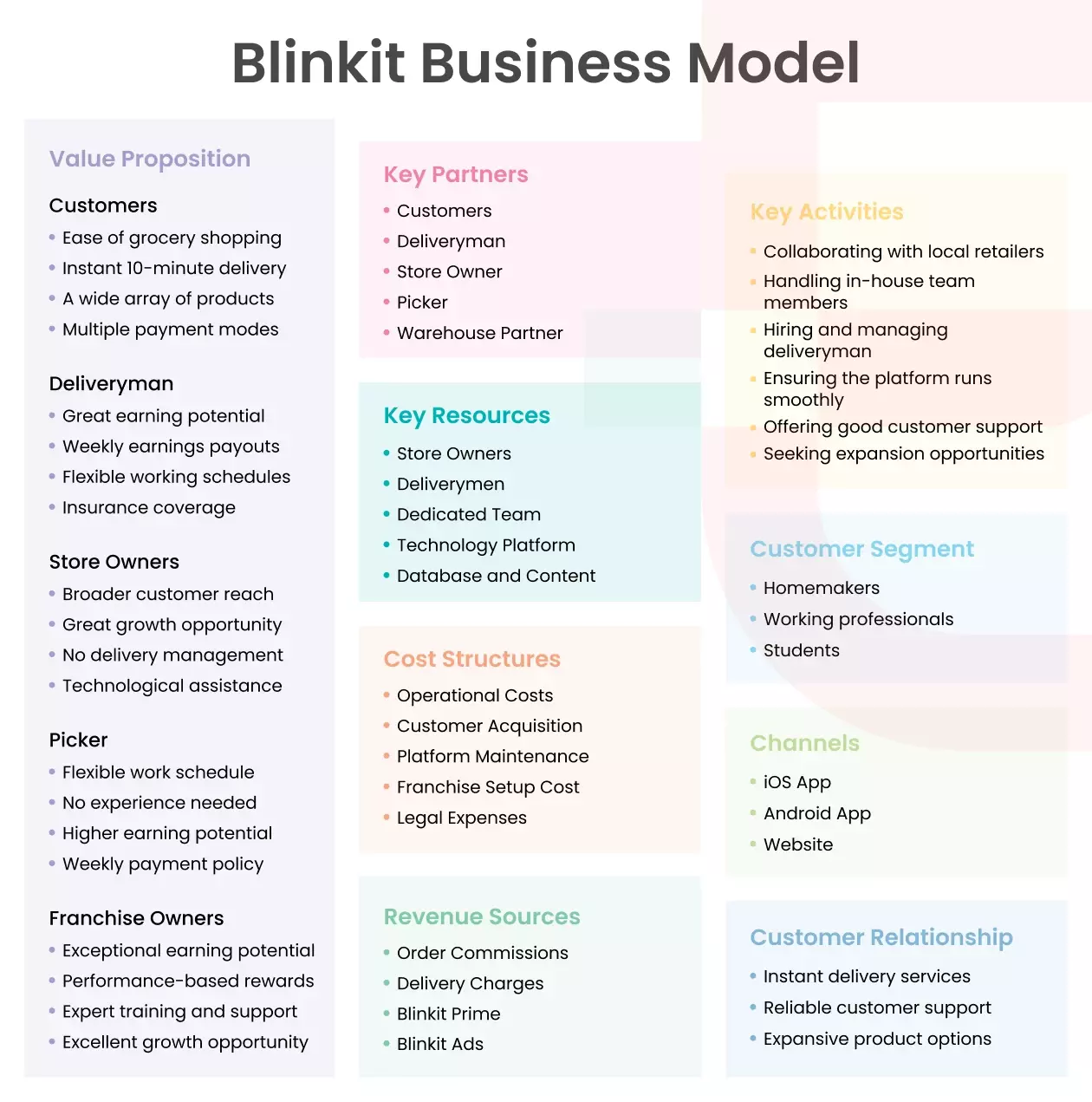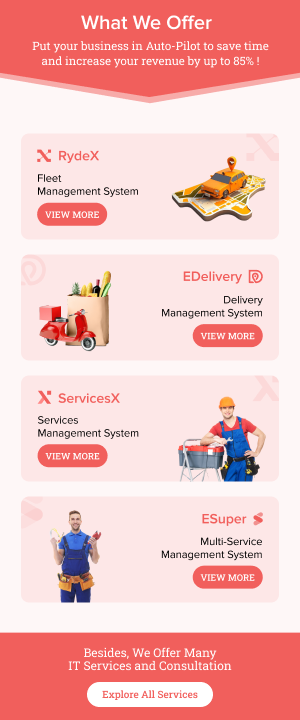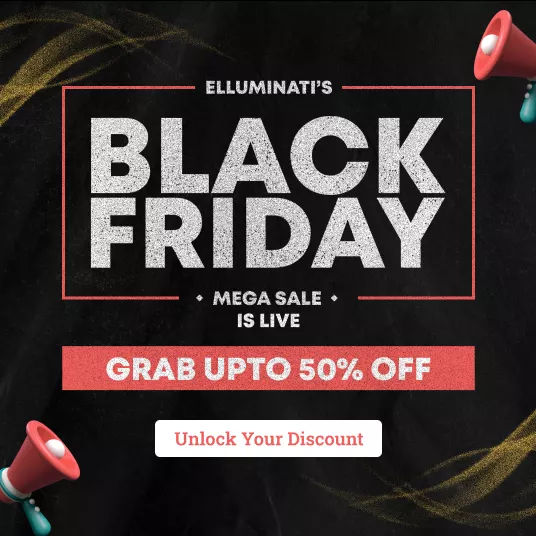
Blinkit is a dominant player in the Indian online grocery sector. The driving factors behind such sky-high growth are its 10-minute delivery and robust business model. The Blinkit business model is built around a network of dark stores that enables the company to deliver products at a lightning-fast speed. These are warehouses that stock a range of items popular in the area.
Despite many brands like Zepto following the same model, Blinkit has been unbeatable in the 10-minute delivery game, enabling it to stay on top of the Indian grocery delivery sector. A recent report from Statista indicates that India may expect to grow its grocery delivery market revenue to USD 83.68 billion by 2030, with Blinkit currently being a major contributor to this growth.
Its growth journey has inspired many entrepreneurs to take the plunge into the market by starting a grocery delivery business. If you aspire to do the same, you’ve landed on the right guide. Here, we will explain the Blinkit business and revenue models, letting you turn them into a blueprint to create yours. So, stay with us to learn everything about this Q-commerce platform.
Navigating Blinkit’s Journey to Becoming One of the Top Online Grocery Delivery Platforms
Blinkit was born in 2013 when Albinder Dhindsa and Saurabh Kumar, former colleagues from Cambridge Systematics, decided to partner up to boost the online grocery market. Initially, the company was named Grofers and started serving the Delhi NCR region.
The platform was focused on quick commerce from the start, and to pursue this, they experimented with 90-minute delivery services in 2014. The initiative received a huge positive response, positioning it as a competitive player in the market.
However, the company’s major milestone was its 10-minute delivery service, which was launched in August 2021. At that time, 10 minutes was the fastest delivery time achieved by any delivery firm, an accomplishment that left the industry and customers surprised.
To achieve this, the company opened several dark stores (warehouses) across its serving cities and started dispatching orders from there.
In December 2021, Grofers was renamed Blinkit to make its title more aligned with its USP, the fastest delivery services. This strategic rebranding was aimed at reinforcing the company’s commitment to speed and efficiency and ensuring that its name accurately reflected its core business offering.
In August 2022, Zomato Ltd. (now Eternal Ltd.) acquired Blinkit in an all-stock deal for USD 568 million. This acquisition brought Zomato’s food market experience, allowing the grocery delivery firm to grow its potential.
Right now, Blinkit is a thriving Q-commerce platform offering an expansive product range that includes personal care, baby care, cosmetics, flowers, baked goods, and even ambulances! Yes, ambulances, too!
As surprising as it may sound, the grocery delivery platform has started Basic Life Support (BLS) ambulance services in Gurugram. The initiative has received quite a good response to date.
One of the best things about this platform is that it never stops experimenting. To prove its true commitment to its customers, the company has now started offering 10-minute return or exchange services for clothing and footwear in selected cities.
Today, Blinkit is recognized for its faster delivery services, all thanks to its strategic dark store approach and robust business model. In the next part, we will delve into the complete Blinkit business model to learn what makes this Q-commerce brand a market player.
Want to Bring Your Grocery Delivery App Idea to Life? Get In Touch With Us to Build a Bespoke Quick Commerce Platform
Uncovering the Different Aspects of the Blinkit Business Model
Understanding the Blinkit business model is important to learn how the company sustains itself in the market. It initially used a marketplace model, but due to inefficiency, it had to switch to a warehouse-based model to facilitate faster delivery services.
Such a drastic change in its model brought so many challenges, but the company was able to tackle them and sustain itself in highly competitive market landscapes, a testament to its adaptability and strategic planning.
In this section, we are going to explore how this strategy offered a competitive edge by understanding its business model canvas.

Key Partners
- Customers: End users who love the convenience of purchasing groceries and other daily essentials delivered at lightning-fast speed.
- Delivery Men: Delivery service providers who deliver groceries and other items to customers.
- Store Owner: Sellers who use the Blinkit platform to sell their products.
- Picker: Assistants who pick and pack ordered items in the Blinkit dark stores.
- Warehouse Partner: Partners who set up and manage the company’s franchise stores.
Value Proposition
Value Proposition for Customers
- The customers can seamlessly shop for groceries and other daily essentials.
- With quick delivery services, they can instantly receive orders in just about 10 minutes.
- The platform’s expansive category allows them to browse from a wide array of products.
- The customers get to choose their preferred payment mode from multiple options.
Value Proposition for Deliverymen
- The platform offers higher earning potential with competitive salaries and rewards.
- The weekly earnings payout policy helps generate a consistent cash flow.
- With flexible timing, a deliverymen can create their own work schedule.
- The platform also offers benefits like accidental and medical insurance coverage.
Value Proposition for Store Owners
- Store owners can extend their reach to a broader customer base with the online platform.
- They can receive higher growth opportunities by serving the masses.
- The platform’s delivery management services take the hassle of delivery off their shoulders.
- Store owners can leverage the technical assistance from the company’s support channels.
Value Proposition for Picker
- The flexible timing policy allows pickers to create their own work schedule as per their availability.
- Working as a picker doesn’t require any prior experience, allowing anyone to start their job as a picker.
- Pickers can earn as they go. The more items they pick and pack, the more they earn.
- The payments are transferred directly into their bank accounts every week.
Value Proposition for Franchise Owners
- Franchise owners can earn 30% of the investment value every year.
- The performance-based reward policy increases the scope of earnings with higher performance.
- The company offers comprehensive training and support, which helps manage the franchise store more easily.
- Being part of the thriving grocery delivery platform offers higher growth opportunities.
Key Activities
- One of the critical activities involves collaborating with local retailers to source grocery items for their dark stores.
- The company also has to hire, train, and manage in-house team members who handle various business tasks.
- Other crucial activities are onboarding, training, and managing deliverymen to ensure faster deliveries.
- The technology platform is the foundation of the company. Therefore, they have to ensure it runs smoothly and offers an unhindered shopping experience.
- The company offers seamless and effective customer service, resolving its buyers’ queries and concerns.
- Lastly, one of the major activities involves continuously looking out for business expansion opportunities.
Customer Segment
- Homemakers who are seeking convenient grocery shopping facilities.
- Working professionals who don’t have time to shop for groceries and other daily essentials.
- Students who are looking for faster and more affordable ways to source grocery items.
Customer Relationship
- Blinkit is committed to instant services with its 10-minute delivery.
- The company offers reliable customer support and helps its customers resolve their issues.
- The platform has an expansive range of products that allow customers to source everything from one place.
The Blinkit business model is simple yet effective. However, its revenue model is even simpler and more diverse. Next, we will discuss how the Blinkit revenue model allows this online grocery delivery platform to make money.
Let’s Take A Look At The Blinkit Revenue Model
The Blinkit revenue model primarily runs on commissions. The company receives several commissions from brands and delivery partners, which helps it generate the majority of its revenue.
However, Blinkit also has some other income sources that help it sustain its business in the cutthroat competitive market. Here are some top revenue streams that help Blinkit make money.
Order Commissions
The company earns commissions from every order placed on its platform. It partners with brands and local shops to allow them to list their products on its platform. Whenever a customer orders something from this grocery delivery app, the company earns a commission from that product’s value.
Delivery Charges
Blinkit is known for its fast delivery services. It charges a set fee to deliver items to customers’ doorsteps. While most of these fees fall into the delivery partner’s account, Blinkit keeps a small percentage as a delivery charge, thus creating an additional revenue stream.
Blinkit Prime
The platform has a subscription program called Blinkit Prime that offers its customers several additional benefits that its normal customers don’t get. This plan is not only great at generating revenue for the company but also boosts customer loyalty as they’re more likely to use Blinkit over other apps.
Blinkit Ads
Blinkit Ads is an advertisement program that allows brands to boost awareness and sales by promoting their products on the platform. The company offers its platform as a promotional space where brands can target customers through various advertisements.
The Blinkit revenue model and business model can serve as a blueprint to create your own grocery delivery business. Now that you have your blueprint, it’s time to build your platform. But before that, it’s better to learn the cost of creating an online grocery delivery app.
How Much Does it Cost to Build a Blinkit Like App?
When building an app, the first thing that comes to mind is how much it would cost me. Understanding an app development cost is crucial for accurate estimation, but it’s not a straight path.
The expense could vary greatly depending on many factors, like the number of features, functionality level, the technology choice, the developers’ location, and expertise.
Moreover, the way you approach development may also affect the cost. For example, building an app from scratch might be more expensive than ready-made options.
This is why many entrepreneurs who want to start an online grocery delivery business but have budget constraints usually prefer readymade solutions over building from scratch. Readymade solutions are platforms that include all the basic functionalities. With little customization and rebranding, they can be instantly launched to serve your business.
Opting for ready-made solutions could be wiser for startups with limited funding. You can launch the initial basic version and scale your platform on the go as per your users’ feedback.
With these apps, the typical turnaround time is significantly shorter than building apps from scratch. So, if you want to launch your grocery delivery platform as soon as possible, this could be the best option.
Ending Note
The Blinkit business model involves an innovative approach that allows the company to stand out and become one of the leading online grocery delivery platforms. We hope studying this model has offered some useful insights into how quick commerce platforms operate, earn revenue, and scale in a dynamic market.
Now that you’re ready to establish your business, it’s time to take the next step and build a powerful app like Blinkit with Elluminati. Our highly customizable solution will help you build and manage a robust online grocery delivery business with all the advanced features it needs to thrive in the market. Get in touch with us to learn more about our product.











